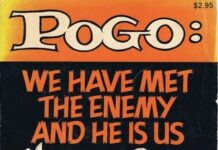Russell Investments is on the block for a reported $2.8 billion asking price and is set to be acquired by the London Stock Exchange (LSE). Russell was purchased by Northwestern Mutual for $1.2 billion in 1999 and made an infusion of about $764 million when Russell’s money market fund dipped below the $1 mark in 2008. At that time, Russell also shuttered its hedge fund business.
 But aside from the AUM and the firm’s institutional presence, what makes it most attractive to the LSE is its index business; a business that was almost totally ignored by Russell’s management a scant 15 years. This was a failure of top management to recognize the power of indexing and branding from a firm which touted active management and being fully-invested all he time and at all costs.
But aside from the AUM and the firm’s institutional presence, what makes it most attractive to the LSE is its index business; a business that was almost totally ignored by Russell’s management a scant 15 years. This was a failure of top management to recognize the power of indexing and branding from a firm which touted active management and being fully-invested all he time and at all costs.
In both instances, these were practices which would later come back to haunt the firm as it sought to promote active management in a world which increasing relied on indexing as the preferred viable investment strategy.
Russell, with $2.60 billion in assets under management and more importantly, $5.2 trillion in assets benchmarked to the Russell family of indexes, is an attractive partner to the LSE which is seeking to expand it array of index products to compete with other U.S. index providers, MSCI, Dow-Jones Indexes, Markit, Bloomberg and NASDAQ OMX.
Sources said Toronto Dominion Bank also expressed interest in the firm, which pioneered the multi-manager investment structure for its large institutional clients in 1969. Since then, the company has undergone numerous structural changes, including a $1 billion infusion of new capital from parent company, Northwestern Mutual, after Russell’s money market fund went below the sacrosanct $1 per share value.
According to a study by the Boston Fed, the largest internal fund bailout was $336.8 million provided by Northwestern Mutual, Russell’s owner, to the Russell Money Market Fund, representing about 6.3% of assets under management in the funds.
The Boston Fed said the bailout occurred because Russell had too much exposure tied to Lehman-related debt. At that time, Northwestern Mutual made the emergency infusion, but it created bad blood between the then Tacoma-based company and its parent.
At about this same time, Russell’s company stock was set for its annual revaluation and given the capital infusion and Northwestern’s power to set the price of company stock, many more senior personnel opted to depart the company.
In today’s market, Russell’s most valuable asset is it index division, which is comprised of various iterations of indexes based on the Russell 1000, 2000 and 3000 indexes, and their derivatives in futures, options and ETFs traded around-the-clock.
The indexes have always been considered a stepchild of Russell’s core multi-manager investment business. However, there was a time when the promotion of the indexes were left to the exchanges that traded them, without active support and input from Russell. As late as the 2003, the indexes were not even listed on the company’s web site. This was because the firm was myopic about its revered institutional investment management presence and endless quarterly market performance autopsies, which were supposed to indicate future market directions and specific asset allocations.
Eventually, a few Russell top executives saw the profits being created by licensing the indexes and increases in trading volumes, as well as the even greater branding opportunities. On a per capita employee basis, the indexes were Russell’s most profitable division, according to its former chief financial officer. It was this slow change which indicated that Russell was failing to adapt to a changing investment marketplace.
As the head of marketing for the New York Futures Exchange (an NYSE subsidiary), I launched the Russell 2000 and Russell 1000 index futures on the New York Futures Exchange in the fall of 1987, but a few short months after their introduction, the Oct. 19, 1987 Crash occurred.
This historic event fermented a hot political debate between the NYSE specialists and index futures traders at the Chicago Mercantile Exchange, which traded the very popular S&P 500 index futures. After about 40 formal academic, regulatory agency and monetary authority studies were conducted to determine where and how the 1987 Crash started, the NYSE decided to sell its New York Futures Trading subsidiary since it was not politically feasible to criticize stock index futures if the NYSE also traded them. It was later determined that the Crash happened when the NYSE specialists and their computer systems failed under the heavy program trading volume.
However, the Russell indexes proved very popular, primarily because they served as performance benchmarks for large institutional clients. When the Russell indexes are reconstituted annually, they create the heaviest volumes on the NYSE and pose a large market risk to the investment firms which undertake the portfolio rebalancings.
Russell Benefited from Regulation
Formed in 1930 by Russell, the grandfather of George Russell, Russell investments benefited from the passage of ERISA in 1974 and through its consulting arrangement with the nation’s largest corporations. George Russell, who some considered to be the industry’s the best pension fund salesman, developed strong relationships with top U.S. corporations pension boards, despite only holding an undergraduate degree from Harvard. His low-key style and Pacific Northwest pedigree made him an unusual pension fund consultant in a field which was largely dominated by East Coast academics and investment firms.
To meet ERISA standards about choosing the most appropriate and qualified managers, Russell developed the multi-manager approach, which essentially bundled the “best-performing managers” into a team for each asset class and investment style. While the strategy had its intellectual appeal, it did not keep pace with actual changes in returns and manager personnel changes, according to former employees. Others said Russell was often too slow to remove under-performing managers from its recommended line-up, which caused funds to under-perform and eroded its credibility.
Other top pension fund industry experts, such as Dean LeBaron, founder of Batterymarch, once called the multi-manager concept more of a gimmick than a proven strategy and a convenient excuse to not hire top individual managers for each style and asset class.
In a 1983 article, LeBaron wrote:
“Agents often behave in ways that may be uneconomic to beneficiaries. Take for example, the growing use by pension sponsors of multiple managers, with its corollary of having sharply rising costs. There is little evidence that aggregate results improve enough to justify the expense. This phenomena may be best explained in terms of the sponsor’s desired to minimize short-term career risk from volatility by diversifying across many managers.”
Russell was purchased by Northwestern Mutual in 1999 and was considered a highly political place to work. Due to its lucrative compensation structure (comprised of company stock, salary and bonuses) and family ownership, Russell was also known to as a firm where a small number of more favored employees vied for George Russell’s attention. This extended to the firm’s executive suite where a former executive was forced out after he reportedly had an affair with his secretary and the appointment of another top executive whose main claim to fame was that he attended college with George Russell’s daughter.










